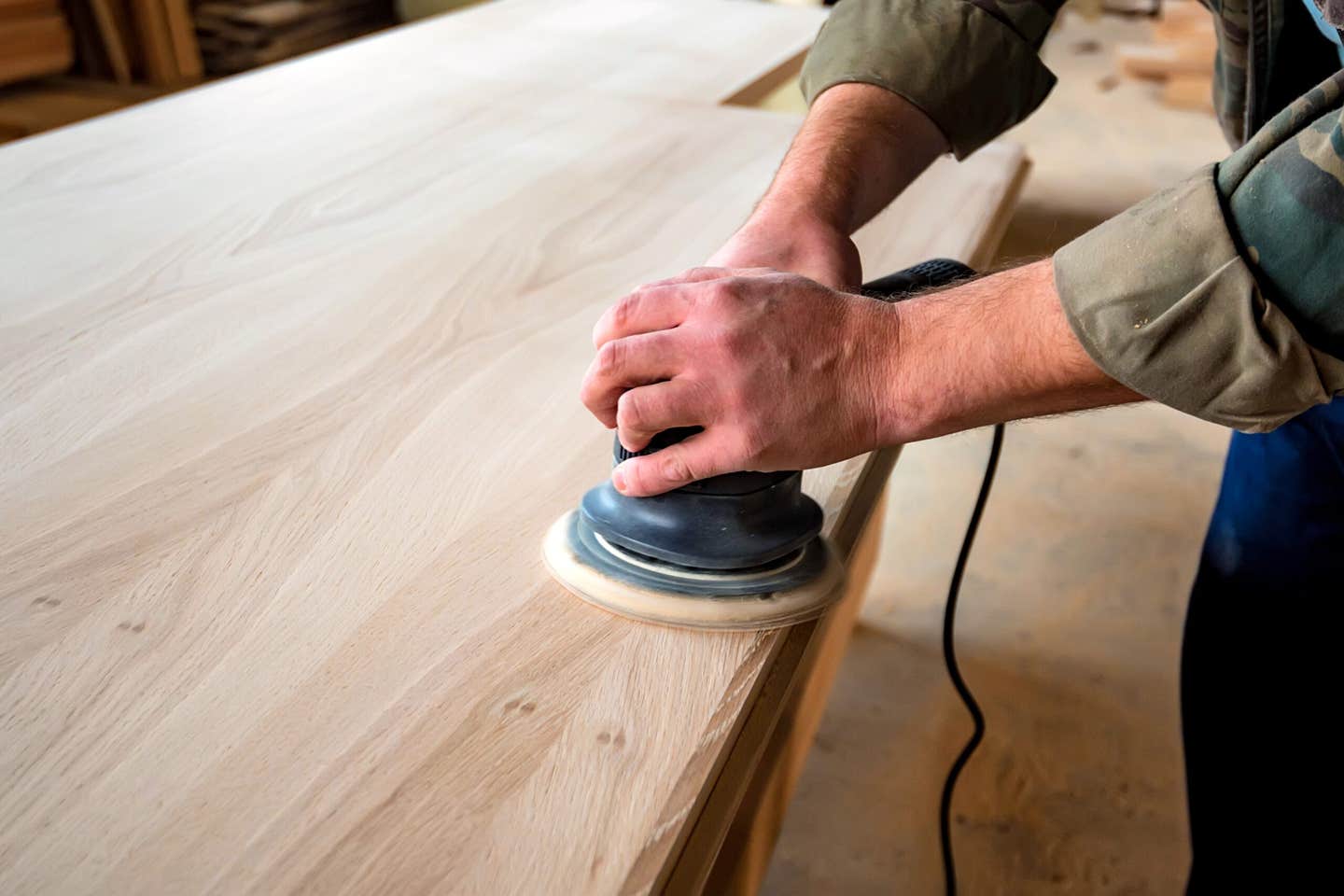Stand out and cash in
We had a little work done on the home place a few months ago. A contractor came in and gave us a price, we signed the papers and all these…
We had a little work done on the home place a few months ago. A contractor came in and gave us a price, we signed the papers and all these very professional people showed up one after the other until everything was done.
My thought at the time was that this guy runs a really tight ship and that his employees must have a great deal of respect for him.
Only, they weren’t his employees. They were all subcontractors.
And it suddenly occurred to me that the perfect model for growing a woodshop business was right there — the age-old contractor/subcontractor relationship. Instead of adding production staff and advertising casework, one could simply sell more services to existing customers.
How many kitchens or baths have we all done through the years where we waited for some homeowner-hired subcontractor to wrap up his portion of the job before we could get in to do ours? We’re not talking about the mechanicals here — no woodshop wants to get involved in electric, plumbing or HVAC. But tile setters, flooring installers and painters all hold us up, too. What if we supplied those subcontractors to the homeowner? It seems so simple and so obvious — and yet virtually nobody does it. By supplying a steady stream of work to these subs, a woodshop could quickly build trust and loyalty and have them work on our jobs when we need them rather than when it’s convenient for them to be there. By managing these services for our clients, we can legitimately and ethically add a fee (call it a markup), helping our bottom line without expending too many resources.
The general contractors win, too. Instead of coordinating three or four different subs and scheduling them, they only have to work with one — you.
Give away space?
Taking the symbiotic concept a little further, a woodshop that already hooks up with an interior designer might consider bringing that relationship in-house. If you’re already working with a good local designer who has earned a solid reputation, why not offer him/her your showroom — for free. They get a place to display their wares without paying rent and you get the best-looking showroom in town. They can work around your existing cabinet displays, adding wall and floor options that help sell what you already make.
Taking this a little further, you might even want to integrate their design software with your production package or, better yet, train them on your CAD system. While you would be involved in any wood-based elements of their design, you would just step out of the way when they tackle drapes and rugs and paint colors. They gain a workshop that understands how they work and you get their entire client list to buy casework, furniture and even trim packages from you.
If you have floor space available, this same model could also work for a flooring contractor. Wouldn’t it be nice to have new flooring in your showroom every few months? By offering a package that includes custom casework with laminate or hardwood flooring and perhaps even tile, you can both build your customer lists by sharing with each other and also coordinate on installs.
The nature of service
Our national economy is changing. We still make planes and cars and feed the world, but the service sector is also growing at a very healthy rate. And the service element of physical products is also growing. Take, for example, the cellphone, which is the most intrusive icon of our new world. We only buy a new phone every year or two, but we pay a whopping bill every month for service. Most of us will go down to the phone store and stand in line for half an hour to have some 18-year-old magically fix a tiny glitch on our phones, rather than pore over a manual for days trying to remedy it ourselves.
Our customers feel exactly like that, too.
They want a custom kitchen or a built-in buffet and, while they have the overall concept down, they don’t quite know all the details yet. In cellphone terms, they know which phone they want, but they don’t quite know how to make it send a photo to Grandma. While most woodworkers just want to get the cabinet design nailed down and start production, we might be missing out on a huge opportunity here. Instead of a flip phone, our customers might just be asking us to provide the latest iPhone. If we’re not listening, they’ll settle for the same old things we’ve always done and our bottom line will amble along unperturbed.
If we educate ourselves on options, that will change.
Knowing what’s new in terms of Lazy Susans or hidden wine racks, drawer slides or hardware, LEDs, touch pads, countertop materials, back splashes, even recycling centers are at the core of the word “custom” in our business. This service — being able to reveal and offer the latest options — has the potential to change our customer base from one niche in the market to the next. The biggest and best jobs are awarded to shops that know what’s new.
So how does a two-man shop in rural Iowa keep up with the latest trends? By investing in a plane ticket once a year. Each summer, there is a major trade show in either Las Vegas or Atlanta (the operators and locations alternate). Here at your feet is every single aspect of our industry from sheet goods to design software, hinges to hardwoods. Furniture builders, cabinetmakers and specialty woodworkers from all over the world congregate for a few days and explore options, share ideas and invite manufacturers to delight, surprise and educate them. Then they bring back what they have learned and, hopefully, share it with their customers. This service, this expertise, is one very large key to growing your business. If you don’t have anything new to show your clients, they will eventually move along. And if the shop down the street isn’t keeping up with the industry, their customers will eventually find you if you are doing your homework.
Use social media
Beyond bringing subs on board and offering the latest product options, there are a few smaller ways that a woodshop can add services to gain more business. One of these is to explore the possibilities of social media. It seems simple, but most shops don’t yet talk to their clients through Facebook and Twitter. Heck, some of us hardly answer the phone. Customer service has changed and, in a world where people can Google “custom cabinet shop” and get 300 options, it seems shortsighted for us to ignore this incredibly powerful tool. A decent website or Facebook page can bring your palette to the client, rather than having them come to you. If your shop is on or near a main thoroughfare, then pasting a banner in the front window with a Web address (URL) and the words “See What We Can Build!” will definitely bring traffic to your site. Once there, potential customers really do need to see what you can build. Give them lots of photos of work you have done: a picture is worth a thousand words.
Then, add services online.
Consider giving people access to a program that lets them choose door styles or hardware or perhaps even lay out a floor plan for a kitchen or bathroom. You can link to manufacturer sites with videos that explain the different options for drawer slides or corner cabinets. Give them stain colors and molding profiles and countertop choices at their fingertips, so that they can begin the design process themselves and become so involved that they need to come to you with questions.
One of the nice things about maintaining a Facebook page for your business is that it can be done from anywhere at any time of the day or night. However, that’s not a very businesslike approach to scheduling and it’s subject to a lack of discipline. By setting aside a few minutes at the same time every day or maybe twice a week, one can develop a habit of updating that keeps the site fresh. One can easily find material to upload — photos of work that’s ready to go out the door or that has just been installed or small cameos of people in the shop or office or new products that catch your eye. Uploading a page and then letting it sit for months unchanged is simply a waste of time.
Another way that a woodshop can add services to gain more business is to find a product to make during slow times. An old friend in Minneapolis, now gone, used to spend his downtime building simple rough-sawn shelving units (see photo, page 45) for retail stores. They were just screwed together, unsanded and unfinished, using whatever species of hardwood boards he could find cheaply at the sawmill. He couldn’t keep up with demand. Antique-, toy- and bookstores loved the product, especially when the boards retained one natural edge and sometimes a little bark. He didn’t overcharge, so his bark was worse than his bite.
This article originally appeared in the December 2013 issue.







